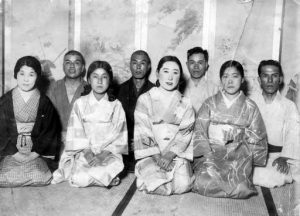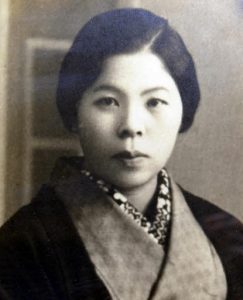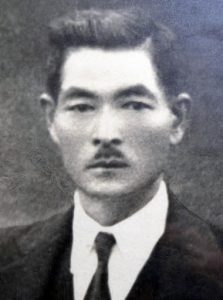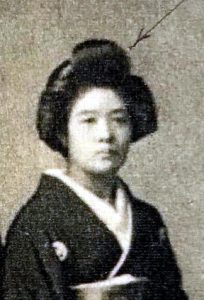Striving to fill voids in Hiroshima—Tragedy of A-bombing devastation is revealed with verification of deaths of six people from three families living in Hiroshima’s former Tenjin-machi
Jan. 1, 2020
More testimonies and materials about victims need to be recovered
by Kyosuke Mizukawa, Staff Writer
The deaths of six people in the atomic bombing from three families, and their addresses, were recently verified. The six people were residents of the former Kitagumi area of Tenjin-machi, what is now Hiroshima Peace Memorial Park in the city’s Naka Ward. Testimonies of surviving family members and photographs again revealed the complete devastation of the area. More testimonies and materials can still be recovered, and the remaining voids filled, concerning the A-bombed remains the city is planning to publicly exhibit.
Sakai Family
All three families in our story lived adjacent to the Hiroshima district known as Tenjin-machi-suji, where the city government is planning to publicly exhibit portions of A-bombed street asphalt and house and other remains, including charred tatami mats. Iwaso Sakai, then 60, and his wife Asayo, 54, died in the atomic bombing at their home, which stood at 13 Tenjin-machi. Their house was located close to the area scheduled to be on display, east of the Monument Dedicated to the Poet Sankichi Toge. They had no children and lived alone.
Kazuko Sakai, 83, is a resident of Asaminami Ward and wife of the late Toshihiko Sakai, who was Mr. Sakai’s nephew. “It seems Mr. Sakai had taught flower arrangement while running an antique shop. Before his death, my husband spoke nostalgically about his uncle. ‘He had a big dog, so I always looked forward to visiting his house,’ he would say.” According to a note written by a relative, the couple’s skeletal remains were found with a forlorn iron bedframe amidst the ruins of their home.
Ms. Sakai still has the memorial photograph taken at the time of the flower arrangement gathering that Iwaso Sakai held at his home before his death. To pray for the repose of the couple’s souls, she registered their names and photographs with the Hiroshima National Peace Memorial Hall for the Atomic Bomb Victims. The registration proved to be the impetus for her interview.
Okusa Family
At 66 Tenjin-machi, around five doors from the Sakai’s home across the street to the south, Sangoro Okusa, then 67, and his wife Tame, 58, lived by themselves and died in the atomic bombing. The couple’s home stood near the present-day east building of the Hiroshima Peace Memorial Museum. The book Hibakusha no Jinsei wo Sasaeta Mono (Things that Supported Hibakusha Lives), published in 2018, included testimony from Setsuro Okusa, Mr. Okusa’s grandson (who died at age 81, in 2013), in which he described the couple perishing instantly in the Tenjin-machi district.
Setsuro was raised at the Okusa Pharmacy, located at 7-chome of the former Otemachi district. He lost his parents, older brother, and grandparents in the atomic bombing. He was then a second-year student at Koryo Junior High School, under the prewar education system, and suffered severe burns on his hands and feet in the bombing while mobilized to engage in the dismantling of houses in the city to create fire lanes. Since the pharmacy could not be recovered, Setsuro managed an electric appliance shop in Hiroshima and raised three children.
According to Setsuro’s oldest son, Yasuhisa, 60, a resident of Nishi Ward, no photographs remain of Sangoro and Tame, his great-grandparents. “It was our family ritual to visit their graves in the morning of August 6.” Even after his father died, Yasuhisa and his family have continued to visit the graves on the commemorative date of the atomic bombing.
Gotanda Family
At 66-2 Tenjin-machi, located next to Mr. Okusa’s home to the south, it has been confirmed that Hisao Gotanda, then 54, and his wife Ishiko, 50, died in the atomic bombing. Their oldest daughter, Chiyuki Kakei, 90, a resident in the city of Higashihiroshima, lived with her parents then. She was a fourth-year student at Hiroshima Municipal Girls’ High School (now Funairi High School). On August 6, she was on leave from school and was staying at her grandparents’ house in the northern part of Hiroshima prefecture. On the day following the atomic bombing, she returned to Hiroshima and in late August found her parents’ remains at the site where their home had stood. After the end of the war, she moved to the present-day city of Mihara, where relatives were living.
When the Chugoku Shimbun interviewed Ms. Kakei at the class reunion of her high school held in Hiroshima, she spoke of the death of her parents. “When I feel discouraged, I always wonder what my parents would tell me,” she said. She also has kept in her possession a photograph taken in front of her family home.
Shunsuke Taga, 69, a resident of Nishi Ward, who serves as the head of a group that promotes the exhibit of A-bombed remains that lie beneath the Hiroshima Peace Memorial Park, anticipates the collection of more testimonies and photographs through the efforts to prepare for the exhibit. “To understand what kind of people lived in the area and how they suffered in the atomic bombing, we would like the city to not display only the remains but to convey the stories behind the remains, utilizing testimonies from families as well as photographs,” said Mr. Taga.
(Originally published on January 1, 2020)











